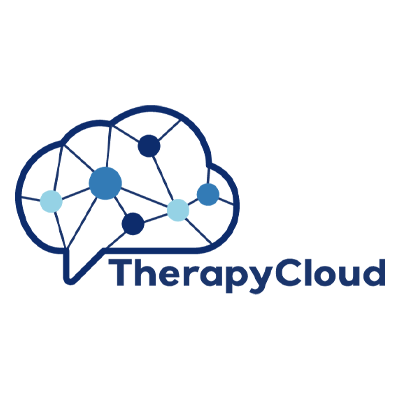Recognizing Secondary Trauma Symptoms and Their Impact on Therapists

As a therapist, your role often involves listening to clients describe deeply distressing or traumatic experiences. While this is an essential part of the work, repeated exposure to trauma can impact your mental, emotional, and physical well-being over time. This phenomenon is called “secondary trauma,” also referred to as “vicarious trauma.”
Secondary trauma is a recognized occupational hazard in mental health care. It does not mean you are unfit for your profession. However, if it is not recognized and managed, it can negatively affect both you and the clients you serve.
What Is Secondary Trauma?
Secondary trauma occurs when you are indirectly exposed to another person’s trauma, often through repeated sessions in which clients recount difficult or disturbing experiences. Your nervous system and cognitive processes can respond in ways similar to direct trauma exposure.
It’s important to recognize that secondary trauma is different from burnout or compassion fatigue. Burnout comes from chronic workplace stress and exhaustion, while secondary trauma stems from repeated empathetic engagement with others’ trauma.
Research has shown that mental health professionals are at higher risk of developing secondary trauma symptoms due to the sustained and personal nature of therapeutic work. For example, a study by Bride et al. (2004) found that a significant percentage of social workers experienced symptoms associated with secondary traumatic stress.
What Secondary Trauma Symptoms Look Like
Secondary trauma can present through emotional, cognitive, physical, and behavioral changes. Recognizing symptoms early allows you to take preventive steps before they escalate.
Emotional Symptoms
- Persistent feelings of anxiety, sadness, or irritability
- Emotional detachment or numbness
- Reduced sense of optimism or hope
Cognitive Symptoms
- Intrusive thoughts or mental images related to the clients’ trauma
- Difficulty concentrating, planning, or making decisions
- Shifts in worldview, such as increased perceptions of danger or mistrust
Physical Symptoms
- Chronic fatigue or disrupted sleep
- Headaches, muscle pain, or gastrointestinal distress
- Lowered immunity and frequent illness
Behavioral Symptoms
- Avoidance of certain clients, cases, or subject matter
- Social withdrawal from colleagues, friends, or family
- Working excessive hours to avoid processing emotional responses
These secondary trauma symptoms can develop gradually, making them easy to overlook. Self-awareness and consistent self-monitoring are key to early identification.
Impact on Your Work and Life
If left unaddressed, secondary trauma can have consequences for both professional performance and personal well-being.
Professional Impact
- Reduced empathy and connection with clients
- Difficulty making sound clinical decisions
- Increased risk of ethical lapses
- Lower job satisfaction, which may lead to early career exit
Personal Impact
- Strain on personal and family relationships
- Decline in overall mental health and life satisfaction
- Loss of interest in activities outside of work
The dual effect on personal and professional functioning underscores the importance of proactive prevention and management.
Prevention and Management Strategies
Preventing and managing secondary trauma requires ongoing effort. Here are evidence-based approaches you can incorporate into your practice.
1. Regular Self-Monitoring: Establish a habit of checking in with yourself at the end of the day or week. Reflect on your emotional state, physical health, and cognitive focus. Journaling or using a mood-tracking app can help identify patterns before they become problematic.
2. Professional Support Systems
- Participate in peer consultation or clinical supervision groups to share challenges and strategies.
- Engage in personal therapy as an ongoing professional maintenance practice, not only when issues become severe.
3. Caseload Management
- Limit the number of high-trauma clients you see in one day.
- Balance intense sessions with lighter appointments when possible.
4. Maintain Boundaries
- Set and adhere to defined work hours.
- Avoid checking work emails or messages outside of scheduled times.
- Create a clear separation and balance between work and personal life.
5. Self-Care and Recovery Practices
- Incorporate regular physical activity and a balanced diet into your lifestyle.
- Use grounding exercises, breathing techniques, or mindfulness practices to regulate your stress response.
- Schedule regular time off and take vacations without engaging in work activities.
6. Advocate for Organizational Support: If you work in a group setting, promote trauma-informed policies, flexible scheduling, and structured staff check-ins. An organizational culture that recognizes secondary trauma can help reduce stigma and encourage preventive action.
When to Seek Additional Help
If secondary trauma symptoms interfere with your clinical work, relationships, or daily life, it’s time to seek help. This might involve:
- Increasing supervision frequency
- Beginning or resuming personal therapy
- Temporarily adjusting your caseload or work hours
Early intervention can prevent symptoms from worsening and help you maintain both personal health and professional competency.
Strengthening Your Support Network Through TherapyCloud
Understanding what secondary trauma is and managing it is not something you have to do alone. One of the most effective ways to prevent and address it is to connect with other professionals who understand the unique challenges of therapy work.
TherapyCloud offers the Therapist Forum - a secure, private community space where you can:
- Discuss cases and challenges (while respecting confidentiality)
- Share strategies for managing stress and workload
- Exchange resources and continuing education opportunities
- Receive encouragement from peers who understand your experiences
Having a network of colleagues to turn to can help normalize your experiences, reduce feelings of isolation, and provide practical ideas for managing the demands of your role.
Join the TherapyCloud community today and get access not only to the Therapist Forum but also to a range of integrated tools that make managing your practice easier and more efficient.




